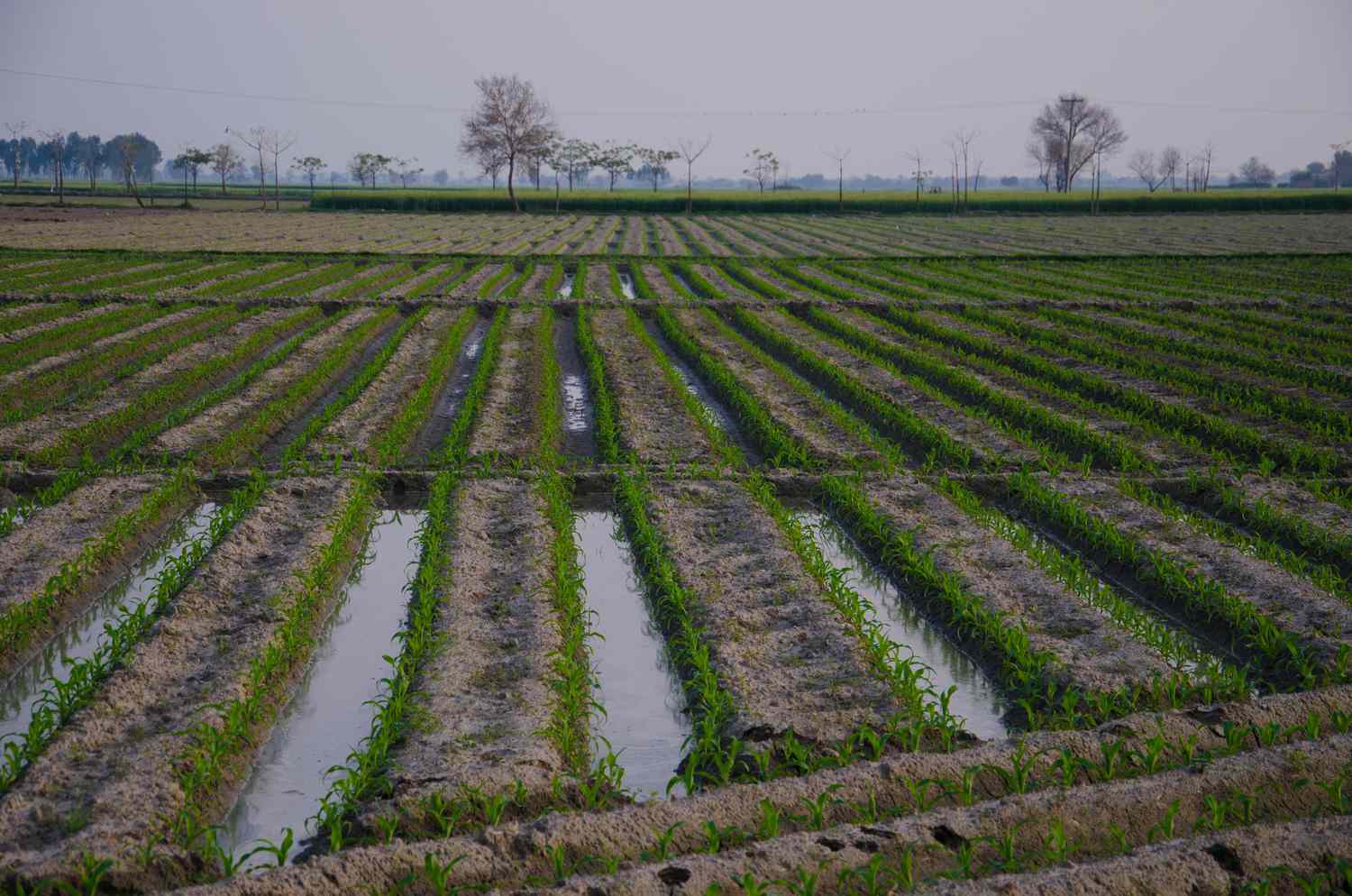Home>Gardening News and Trends>Is The Greenhouse Effect Always A Bad Thing? What Could Make It A Bad Thing?


Gardening News and Trends
Is The Greenhouse Effect Always A Bad Thing? What Could Make It A Bad Thing?
Modified: January 22, 2024
Discover the latest news on the greenhouse effect and its potential negative impacts. Uncover what factors can turn the greenhouse effect into a harmful phenomenon.
(Many of the links in this article redirect to a specific reviewed product. Your purchase of these products through affiliate links helps to generate commission for Chicagolandgardening.com, at no extra cost. Learn more)
Table of Contents
Introduction
The greenhouse effect is a natural process that plays a vital role in sustaining life on Earth. It refers to the trapping of heat in the atmosphere by certain gases, known as greenhouse gases. These gases include carbon dioxide (CO2), methane (CH4), nitrous oxide (N2O), and water vapor (H2O). Without the greenhouse effect, the Earth’s average temperature would be much colder, making it inhospitable for many forms of life.
While the greenhouse effect is necessary for our planet’s habitability, there are growing concerns about the impact of human activities, such as the burning of fossil fuels and deforestation, on the intensification of this natural phenomenon. This has led to an increase in greenhouse gas concentrations, leading to global warming and climate change.
In this article, we will explore the various aspects of the greenhouse effect. We will examine both the positive and negative effects it has on our planet and delve into the factors that can make it a bad thing. By gaining a better understanding of the greenhouse effect and its implications, we can make informed decisions and take steps to mitigate its adverse effects.
Understanding the Greenhouse Effect
The greenhouse effect is a natural process that occurs when certain gases in the Earth’s atmosphere trap heat from the sun. These gases act like a blanket, allowing sunlight to enter the atmosphere but preventing some of the heat from escaping back into space. As a result, the Earth’s surface and lower atmosphere are warmed, creating a stable climate necessary for life.
Greenhouse gases, including carbon dioxide (CO2), methane (CH4), nitrous oxide (N2O), and water vapor (H2O), play a crucial role in the greenhouse effect. They absorb and re-emit infrared radiation, which is the heat energy radiated by the Earth’s surface. This trapped heat keeps the planet warm enough to sustain various ecosystems and support diverse life forms.
Without the greenhouse effect, the Earth’s average temperature would be around -18°C (0°F), making it unsuitable for most living organisms. The greenhouse effect is a natural and necessary phenomenon that regulates the planet’s temperature and ensures its habitability.
However, human activities have led to an increase in greenhouse gas emissions, primarily from the burning of fossil fuels for energy, deforestation, and industrial processes. This has caused a rise in greenhouse gas concentrations in the atmosphere, amplifying the greenhouse effect and leading to global warming.
It is essential to note that the greenhouse effect itself is not a bad thing. It is critical for maintaining the Earth’s temperature within a habitable range. However, when the natural balance is disrupted by excessive greenhouse gas emissions, it can have detrimental effects on the environment and the health of living beings.
Next, we will explore the positive aspects of the greenhouse effect and understand how it benefits our planet.
The Positive Aspects of the Greenhouse Effect
The greenhouse effect, when functioning within natural parameters, plays several crucial roles that benefit the Earth and its inhabitants. It helps maintain a comfortable average temperature, supports agricultural productivity, and is vital for the water cycle.
One of the positive aspects of the greenhouse effect is its role in regulating the Earth’s temperature. The presence of greenhouse gases in the atmosphere allows sunlight to penetrate and heat the planet’s surface. Without these gases, the Earth would be much colder, making it difficult for life as we know it to thrive.
Moreover, the greenhouse effect supports agricultural productivity by creating favorable climatic conditions. The trapped heat helps prevent sudden temperature drops during the night, protecting crops from frost. Additionally, certain greenhouse gases, such as carbon dioxide, can act as fertilizers for plant growth, enhancing photosynthesis and increasing crop yields.
The greenhouse effect is also closely linked to the water cycle. As the Earth’s surface and lower atmosphere warm, it increases evaporation rates, leading to the formation of water vapor. This water vapor condenses into clouds and eventually falls as precipitation. The sustained presence of greenhouse gases helps maintain a stable water cycle, ensuring a sufficient supply of freshwater for ecosystems and human activities.
Furthermore, the greenhouse effect contributes to biodiversity by creating diverse habitats. Different ecosystems exist due to variations in temperature and climate, which are regulated by the greenhouse effect. This allows for the existence of a wide range of species, each adapted to specific environmental conditions.
Overall, the greenhouse effect, when functioning naturally, has several positive impacts on our planet. It regulates temperatures, supports agriculture, maintains the water cycle, and fosters biodiversity. However, while these benefits are essential, it is crucial to understand the potential negative effects of an intensified greenhouse effect, which we will explore in the next section.
The Negative Effects of the Greenhouse Effect
While the greenhouse effect is a natural and necessary process for maintaining a habitable planet, its intensification due to human activities has led to several negative consequences. The primary concern is the phenomenon known as global warming, which is causing widespread climate change.
Increased greenhouse gas emissions, primarily from the burning of fossil fuels, have resulted in higher concentrations of these gases in the atmosphere. This amplifies the greenhouse effect, trapping more heat and leading to a rise in global temperatures. The consequences of global warming are far-reaching and impact various aspects of our planet.
Rising temperatures have led to the melting of glaciers and polar ice caps, contributing to sea-level rise. This poses a significant threat to coastal regions, increasing the risk of flooding and displacement of populations. Furthermore, the warmer temperatures have also led to changes in precipitation patterns, causing more frequent and intense weather events like hurricanes, droughts, and heatwaves.
The negative effects of the greenhouse effect extend beyond changes in weather patterns. It has also had detrimental impacts on ecosystems and biodiversity. Many species struggle to adapt to rapidly changing conditions, and disruptions in habitat and food availability can lead to population declines and even extinctions.
Another consequence of the greenhouse effect is the acidification of oceans. Increased levels of carbon dioxide in the atmosphere are absorbed by seawater, leading to a decrease in the pH level of the ocean. This acidification has harmful effects on marine life, including coral reefs and shellfish, as it affects their ability to build and maintain their structures.
Moreover, the intensification of the greenhouse effect contributes to air pollution and poor air quality. Certain pollutants, known as greenhouse gas precursors, are released when fossil fuels are burned. These pollutants can have detrimental effects on human health, causing respiratory problems and other illnesses.
Overall, the intensified greenhouse effect has resulted in significant negative impacts. Global warming, climate change, rising sea levels, weather extremes, biodiversity loss, ocean acidification, and air pollution are just some of the consequences we face. It is crucial to address these issues and take action to mitigate the harmful effects of the greenhouse effect.
Factors That Can Make the Greenhouse Effect a Bad Thing
While the greenhouse effect is essential for maintaining a habitable planet, there are factors that can intensify it beyond natural levels, leading to adverse consequences. These factors include human activities, feedback loops, and the release of additional greenhouse gases into the atmosphere.
One of the key factors contributing to the intensification of the greenhouse effect is the burning of fossil fuels for energy production. The combustion of coal, oil, and natural gas releases large amounts of carbon dioxide into the atmosphere, increasing greenhouse gas concentrations. This, in turn, enhances the greenhouse effect and contributes to global warming.
Deforestation is another significant factor that can worsen the greenhouse effect. Trees absorb carbon dioxide during photosynthesis, acting as natural carbon sinks. However, when forests are cleared, this stored carbon is released back into the atmosphere, further contributing to greenhouse gas emissions.
Another concern is the existence of feedback loops within the climate system. For example, as the Earth warms, it can lead to the melting of ice and permafrost, releasing stored greenhouse gases like methane. As more methane is released, it further amplifies the greenhouse effect and exacerbates global warming.
In addition to human activities and feedback loops, the release of other greenhouse gases, such as methane and nitrous oxide, can also contribute to the intensification of the greenhouse effect. Methane is released from various sources, including livestock farming, rice cultivation, and the production and transport of fossil fuels. Nitrous oxide is primarily emitted from agricultural and industrial activities.
Furthermore, the expansion of urban areas and changes in land use can lead to the creation of heat islands. Urbanized regions tend to absorb and retain more heat, intensifying local temperatures and contributing to the overall warming trend associated with the greenhouse effect.
It is crucial to address these factors and take proactive measures to mitigate the intensification of the greenhouse effect. This includes transitioning to cleaner and renewable energy sources, promoting sustainable land use practices, and implementing policies to reduce greenhouse gas emissions.
By understanding the factors that can make the greenhouse effect a bad thing, we can work towards finding sustainable solutions and minimizing the negative impacts on our planet. It requires collective efforts and a commitment to reducing our carbon footprint, ensuring a more sustainable and habitable future.
Conclusion
The greenhouse effect is a natural process that is vital for maintaining a habitable planet. It helps regulate the Earth’s temperature, supports agricultural productivity, and plays a crucial role in the water cycle. However, human activities have intensifying the greenhouse effect, leading to global warming, climate change, and various negative consequences.
While the greenhouse effect itself is not inherently bad, it is essential to address the factors that contribute to its intensification. Burning fossil fuels, deforestation, feedback loops, and the release of additional greenhouse gases are among the factors that can make the greenhouse effect a bad thing.
The negative effects of the intensified greenhouse effect are far-reaching. They include rising global temperatures, sea-level rise, extreme weather events, biodiversity loss, ocean acidification, and air pollution. These consequences pose significant threats to ecosystems, human well-being, and the planet as a whole.
To mitigate the harmful effects of the greenhouse effect, it is crucial to take proactive measures. Transitioning to cleaner and renewable energy sources, promoting sustainable land use practices, reducing greenhouse gas emissions, and protecting and restoring natural habitats are among the key actions needed.
Addressing the factors that contribute to the intensification of the greenhouse effect requires collaboration at local, national, and global levels. Governments, businesses, communities, and individuals all have a role to play in reducing greenhouse gas emissions, adapting to climate change, and working towards a more sustainable future.
By understanding the greenhouse effect and its implications, we can make informed decisions and take proactive steps to mitigate its negative impacts. Through collective efforts, we can create a more sustainable and resilient planet for current and future generations.




